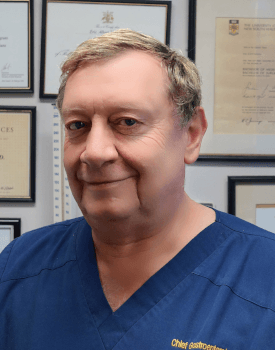HIATUS HERNIA
HIATUS HERNIA
Normally, the junction between the food pipe (oesophagus) and the stomach is at the level of the diaphragm. When this junction (the gastro-oesophageal junction) moves up through the diaphragm taking with it some of the stomach, a hiatus hernia is present.
What causes a hiatus hernia?
With age, the elasticity of the diaphragm and supporting structures is reduced and thus the gastro-oesophageal junction and stomach can move up (“herniated”) into the chest cavity. Hiatus hernias occur in about 20% of the population and frequently cause no symptoms.
What are the symptoms of a hiatus hernia?
Hiatus hernias are frequently associated with “reflux” where the stomach contents move up into the oesophagus. This gives symptoms of heartburn and indigestion.
What are the complications of a hiatus hernia?
Complications include:
• Iron deficiency anaemia.
• Ulceration and bleeding.
• Fibrous narrowing of the oesophagus.
OUR SPECIALISTS
SERVICES
OUR ADDRESS
| Level 10 & 11, 1 Newland Street Bondi Junction NSW 2022 |
| Level 10 : Procedures |
| Level 11 : Consultations |








